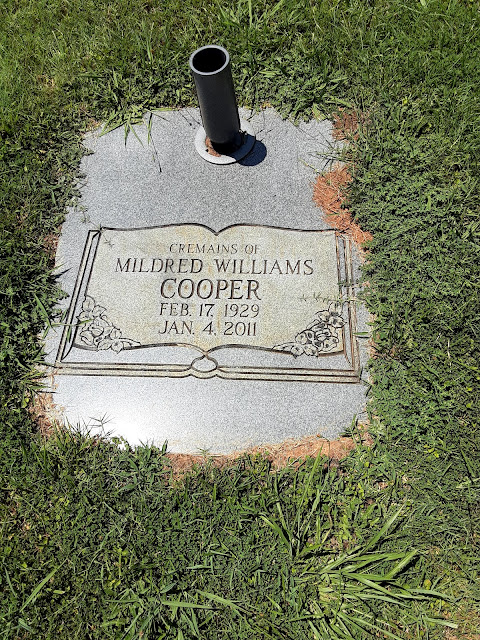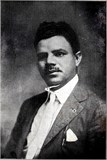Free People Of Color Brooks, Clark And Associated Families In Western NC
Introduction
I started my journey researching my maternal
grandmother's line about 3 years ago. A lot of the family reunions, that we
attended, were mainly on my grandfather's side. Every once in a while, I
would ask her about her father because she never really talked about him.
Her reply would always be that he was part Indian, had soft hair, a slim hooked nose, and was light-skinned. Her father's name was William Mckinley
Young. He was the son of Joseph "Joe" Deck and Laura L. Young. His
grandparents were George Deck and Sarah Brooks. William died in 1963 and that
was the last time my grandmother saw her father. Over the years she
has been disconnected from that side of the family. Her father's line was a
mystery to me and others. I wanted to know more about them the older I
became. After many years of researching my other family lines, she
finally asked me to research hers. I found her father's death certificate and
it had his father listed as "Joe Deck". My grandmother never knew his
last name. However, she was told as a child, that they came from the eastern part of NC.
After a year from taking a break, I started back researching. I remember my
grandmother, Ola Mae, telling me that her father was related to Brooks.
Well, that made sense considering that he attended Brooks Chapel United
Methodist Church, founded by my 4th great grandfather Jerry Brooks, and was
buried there. Unfortunately, we still have not located his grave.
New Discoveries
Last year, I found all types of
records and photos thanks to my cousin the late Thomas Dudley. I also
found a DNA cousin who just so happens to have her tree posted on the
site. From there, I found our connection to Brooks. I came across an
article about the Brooks lineage in the Shelby Star. It was then that I
discovered that they were free people of color. I was so excited when I
found out and couldn't wait to tell my grandmother. A genealogist and curator by the
name of Pam Wilson, helped me build my tree on the gene site. She was so
intrigued, that she didn't mind.
Our
Roots
The Brooks line descends from an Irish indentured servant by the name of Elizabeth Brooks and a free man of color. His name is unknown. Through that union, Sarah Brooks, my 5th x great-grandmother was born. Sarah was born in MD circa 1787.
Family Lore-Brooks Lineage as Told By Lily Mae Brooks Whitworth
" To go back a hundred years or more to get to
the history of a family requires much time, study, and research. That I
cannot do, but I can recall some of the happenings of those early days – told
to me by my father and mother (and) beginning with my grandparents who were Jerry and Sarah Brooks. My
grandfather was never a slave. He was free-born. I think we
know how that came about. Grandmother Sarah was brought
from Portugal when (she was) a child. Many foreigners (sic) were
coming to America at that time and were mingling with Indians, whites, and Negroes. My grandfather met Sarah and liked her. They were married and to
that union were twelve children born (sic), eight boys
and four girls. Namely, (the boys were) Dan, Oliver, Nathan, Isaac,
Joseph, Alfred, Elisha, and Elijah. The girls were Mary Ann, Elizabeth, Mamie and
one I can’t recall her name. “
- Lily Mae Brooks
Whitworth
Source: Lily
Mae Brooks Whitworth(Excerpted From Speech Notes)
Occasion: Brooks/Whitworth
Family Reunion at Whitworth Home in Kings
Mountain, NC
Date: August 5, 1978
Original: Private Collection of Vaughn H. Whitworth
Copy: Private Collection of Thomas R. Dudley
Note: The sibling
that Lily Mae Brooks couldn't recall turned out to be Sarah Brooks, my 3rd
great -grandmother and the daughter of Jerry Brooks and Eliza Clark.
The
Portuguese Clark Line
Steve Pony Hill writes, "First off let me say this, I have no doubt that before the Civil War that the community of mixed-blood persons residing in Sumter County was probably referred to as "Turks". That this label was meant to define a Turkish origin for the group, I do not believe. In other areas at the same time, people of the same mixed blood were called "Portuguese" and "Moors" yet their ancestors are not from Portugal or the coast of Africa. 'Turk' was used the same way 'Melungeon' was used in Tennessee...not to explain the origin of a people, just to give a label to a mixed-blood community to differentiate it from the whites and blacks around them."
The
Core Names And Origins
Photos Of The Grave Site
The White Eastern Pine tree on the church grounds. Arwin Smallwood explained to us that some of our ancestors brought twigs and seeds to plant to remind them of their ancestral home.
(Photo Courtesy of Cynthia Kennedy)
Migrations
I was curious to know why these family clusters migrated and how they knew where to go. No matter where they settled, they always traveled together with their relatives and gravitated to communities similar to theirs. They usually took Indian trails and paths to get to their destination. Some families would travel back and forth because they had other families that stayed behind. Unlike the white settlers, these Natives knew the paths and where to travel for centuries. One line that stood out is the Roberts. The Roberts was in Lincoln County NC at one point, then eventually migrated to Indiana. They settled in a community known as The Lost Creek Settlement. Several of the Revels family migrated there as well. Below is the map that shows the Wilderness Road. As you can see, the road starts in Morganton NC. Some families used that road to migrate to Indiana, Kentucky, Pennsylvania, and Ohio.
Historical Articles And Reports On These Remnant Families
The first black/Native US Senator, Hiram Rhodes Revels, lived near my ancestors. His brother was a blacksmith and owned a barbershop. He has been referred to as Croatan and Tuscarora.
Below, Robert K. mentions Lumbee offshoots in his report. I was no longer able to find his report directly. This is from Roberta Estes's site.
A Report on Research of Lumbee Origins by Robert K. Thomas – Part 18 – Appendix
"There are a few Lumbee “off-shoots” I would like to visit soon – one group near Grouse in Lincoln County, NC; another at Swannanoa near Asheville; and the last in Macon County near Franklin, NC."
William Isaac Brooks, 1856-1932, and Family. L-R 1st Row: William Isaac (Ike), Harold Melrose (Uncle Mel), Katie Irene, Lily Mae (Mama Lily), Leola Amie. Standing in back Birdie Virginia (Aunt Birdie)
(Photo Courtesy of Thomas Dudley)

















































Comments
Post a Comment